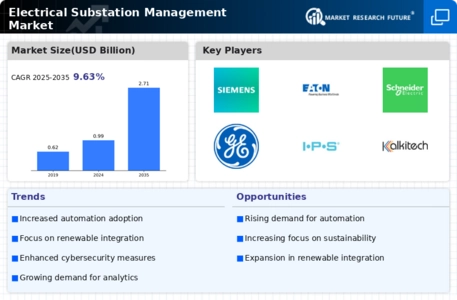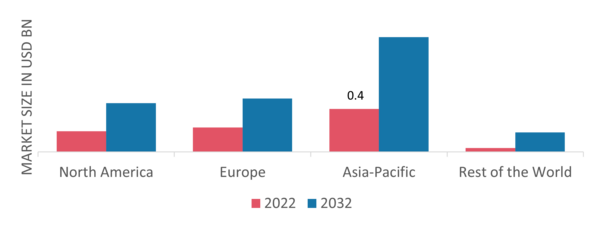Market Growth Projections
The Global Electrical Substation Management Market Industry is projected to experience substantial growth over the next decade. With a market value of 0.99 USD Billion in 2024, it is anticipated to reach 2.71 USD Billion by 2035. This growth trajectory suggests a compound annual growth rate of 9.6% from 2025 to 2035. Such projections reflect the increasing investments in electrical infrastructure and the rising demand for efficient substation management solutions. The market dynamics indicate a robust expansion driven by technological advancements, regulatory support, and the need for enhanced grid reliability.
Focus on Grid Resilience and Reliability
The Global Electrical Substation Management Market Industry is increasingly focused on enhancing grid resilience and reliability. With the growing frequency of extreme weather events and other disruptions, utilities are prioritizing the fortification of their electrical infrastructure. This focus on resilience involves investing in advanced substation technologies that can withstand adverse conditions and ensure continuous power supply. As a result, the market is witnessing a surge in demand for solutions that provide real-time monitoring and rapid response capabilities. This trend not only improves service reliability but also aligns with broader efforts to modernize electrical grids globally.
Rising Urbanization and Population Growth
The Global Electrical Substation Management Market Industry is also driven by rapid urbanization and population growth. As urban areas expand, the demand for reliable electricity supply intensifies, necessitating the development of new substations and the upgrading of existing ones. This trend is particularly evident in emerging economies where urban centers are growing at unprecedented rates. The need for efficient substation management becomes paramount to ensure that the electrical grid can support the increasing load. Consequently, this demographic shift is likely to propel market growth, as utilities seek to enhance their infrastructure to meet the rising energy demands of urban populations.
Government Initiatives and Regulatory Support
Government initiatives and regulatory frameworks play a pivotal role in shaping the Global Electrical Substation Management Market Industry. Many governments are implementing policies that encourage investment in electrical infrastructure, particularly in developing regions. These initiatives often include financial incentives for upgrading existing substations and constructing new ones. Such support is crucial for enhancing grid reliability and accommodating future energy demands. As a result, the market is projected to expand, with estimates suggesting it could reach 2.71 USD Billion by 2035. This regulatory backing not only fosters growth but also ensures that substations meet modern operational standards.
Increasing Demand for Renewable Energy Integration
The Global Electrical Substation Management Market Industry is experiencing a notable shift towards the integration of renewable energy sources. As countries strive to meet sustainability goals, the demand for efficient management of substations that accommodate solar, wind, and other renewable energies is rising. This trend is evidenced by the increasing number of renewable energy projects worldwide, which necessitate advanced substation management solutions. By 2024, the market is projected to reach 0.99 USD Billion, reflecting the urgency for utilities to adapt their infrastructure to support this transition. The ability to manage these diverse energy inputs effectively is crucial for maintaining grid stability.
Technological Advancements in Smart Grid Solutions
The Global Electrical Substation Management Market Industry is significantly influenced by advancements in smart grid technologies. These innovations enhance the operational efficiency and reliability of substations through real-time monitoring, automation, and data analytics. The implementation of smart grid solutions allows for better load management and predictive maintenance, which can reduce operational costs. As utilities increasingly adopt these technologies, the market is expected to grow at a compound annual growth rate of 9.6% from 2025 to 2035. This growth is indicative of the industry's commitment to leveraging technology to improve service delivery and operational resilience.














Leave a Comment